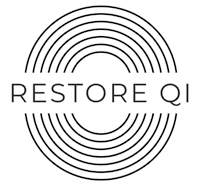How to Become a Sound Bath Practitioner: Your Guide to a Harmonious Career Path
Embarking on the journey to become a sound bath practitioner combines my passion for wellness with the unique healing properties of sound.
As a holistic approach to relaxation and stress reduction, sound bath sessions involve immersing participants in the soothing vibrations of instruments like gongs, singing bowls, and chimes.
This practice not only nurtures a sense of community among attendees but also promotes deep healing and a tranquil state of mind.

My experience has taught me that to be effective in this role, I must have a thorough understanding of the principles behind sound therapy, as well as a sensitivity to the energies within a group setting.
A sound bath practitioner needs to be attuned to the collective mood and individual needs of participants to create a harmonious and impactful experience.
Proper training and certification are essential to ensure safety and professionalism within the practice. This is complemented by learning how to use various sound bath instruments and techniques proficiently to guide individuals through their auditory journey to wellness.
Acquiring practical experience is a cornerstone in building my practice as a sound bath practitioner.
I have learned that connecting with the community and continually expanding my professional network are vital steps toward growth and success in this field.
By doing so, I have opened doors to new opportunities and insights that continuously shape my approach to sound healing.
Key Points
- Sound bath practice is a blend of wellness focus, community building, and sound healing techniques.
- Formal training and experiential knowledge are fundamental to succeeding as a practitioner.
- Ongoing professional development and networking are crucial in nurturing a successful sound bath practice.
Table of Contents
Understanding Sound Baths and Healing
In my exploration of sound baths, I’ve discovered they are rooted in the intricate relationship between vibration and well-being. Here, I’ll explain how sound baths harness the power of specific frequencies to promote healing.
The Science of Sound Healing
As a practitioner, I’ve learned that sound healing operates on the principle of resonance. Resonance is the process where the vibrating frequency of one object can affect the frequency of another.
Resonance occurs when one vibration meets another and they synchronize, potentially leading to therapeutic effects on the human body.
Sound healing leverages this by using tools like singing bowls and gongs to produce sounds with frequencies that can encourage a state of harmony and balance in the body.
Research indicates that these vibrations interact with our body’s energy centers, or chakras, to facilitate a sense of peace and well-being.
Benefits of Sound Baths
My experience with sound baths has shown me their profound benefits. Participants often report:
- A deeper meditation state due to the immersive auditory environment
- Reduced stress and anxiety through the calming effect of harmonic frequencies
- Enhanced mental clarity as the mind settles into the sound-induced tranquility
- Improved sleep patterns following sessions, attributed to the soothing effect on the nervous system
The benefits can be attributed to the way sound baths utilize energy in the form of vibrations and frequencies to heal and recalibrate the body’s own energy fields.
As someone dedicated to this practice, I strive to create a sound environment that nurtures both physical and emotional healing.
Training and Certification

Choosing the ideal training program and understanding the certification process are crucial steps toward becoming a sound bath practitioner. Below, I outline the specific paths to take and what they entail.
Choosing the Right Training Program
When I set out to become a certified sound bath practitioner, my first step was finding a sound bath training program with a comprehensive curriculum. Here’s what I looked for and suggest you consider:
- In-depth knowledge of sound theory and its effects on the body
- Hands-on practice with various instruments like gongs, tuning forks, and Himalayan singing bowls
- Techniques for effectively facilitating sessions and crafting soundscapes
- Understanding the principles of sound healing and its therapeutic applications
A well-thought-out training program typically spans several weeks or months and may include both in-person and online learning components.
The Certification Process
Upon completing my training, the next
Sound Bath Instruments and Techniques

When I guide students on their journey to becoming sound bath practitioners, I emphasize the importance of understanding and mastering the instruments and techniques that create the deeply immersive experience.
Popular Instruments Used
The cornerstone of any sound bath is the rich palette of instruments that I introduce to my students. Among these:
- Gongs: Known for their resonant depth and ability to produce complex overtones.
- Crystal Singing Bowls: Favorites for their clarity and precision in emitting pure tones.
- Himalayan Singing Bowls: These metal bowls create rich harmonics that resonate with those of crystal bowls.
- Chimes: They contribute delicate accents that complement the sustained tones of bowls and gongs.
Each instrument has its unique sonic signature and method of playing to achieve harmonics and overtones that envelop the listener.
Developing Your Skillset
To harness the transformative power of these instruments, I advise a practical and mindful approach:
- Practice Regularly: Spend time daily to understand the nuances of each tone and vibration.
- Learn from Experts: Watch and learn from seasoned practitioners to grasp the subtleties of playing methods.
- Stay Attuned to Feedback: Pay attention to the responses of those who participate in your sessions to refine your technique.
Remember, each singing bowl, be it crystal or Himalayan, gong, or chime, requires a sensitive touch to bring out its full potential. It’s not just about the notes you coax from these instruments, but the silence between them.
Practical Experience and Building Your Practice

To become a skilled sound bath practitioner, it’s essential to gain hands-on experience and cultivate a practice that resonates with both the soul and the community. This not only enhances your capabilities but also establishes you as a reputable figure in the world of wellness.
Hands-on Experience
I’ve learned that nothing compares to firsthand experience when mastering the art of sound baths.
Initially, I started by attending workshops and training sessions led by experienced practitioners. It allowed me to comprehend the intricacies of this therapeutic modality and how it can aid in relaxation and healing on a holistic level — encompassing body, mind, spirit, and soul.
Group Sound Baths: In my journey, offering group sound baths was a pivotal step.
Not only did it give me the chance to work with diverse energies and feedback, but it also deepened my understanding of how collective experiences can amplify relaxation and therapeutic effects.
By leading these group sessions, I could refine my ability to connect with my audience and adapt to their needs in real-time.
Attracting and Retaining Clients
Attracting clients involves sharing my authentic views on the power of sound healing and actively engaging with my community.
I’ve found that establishing a strong online presence and contributing insightful content through social media platforms builds my reputation and draws people to my practice.
- Community Engagement: By conducting free introductory sessions or participating in community wellness events, I’ve effectively spread the word about my services. Regular interactions and transparent communication have been key in retaining clients.
- Reputation Building: I maintain a high standard of service and ensure a personalized approach for every individual. Testimonials from satisfied clients are invaluable; they not only affirm their transformative experiences but also persuade others to embark on their healing journey with me.
Establishing trust and consistency is the foundation of my thriving practice. By focusing on genuine connections, quality sessions, and ongoing personal development, I continue to grow as a soundbath practitioner.
Networking and Professional Growth

As a sound bath practitioner, I’ve found that networking is key to professional growth. Connecting with fellow practitioners not only expands my community, but also enriches my practice with diverse insights.
In the USA, there are various wellness groups and events that I engage with. From local meet-ups to large conferences, these opportunities allow me to stay abreast of industry trends and forge meaningful collaborations.
When I travel out of town, I make it a point to visit wellness centers and join sound healing sessions. It’s a great way to build my reputation and gain exposure in different markets.
Here’s how I approach networking:
- Join Professional Associations: I’m part of several sound therapy and wellness organizations. They host events and offer resources for continuing education.
- Attend Workshops and Conferences: These gatherings are gold mines for learning and connecting with like-minded professionals.
- Social Media: I use platforms to connect with a broader audience, sharing my experiences and learning from others.
- Word-of-Mouth: I encourage my clients to share their experiences. A good word from a satisfied client goes a long way.
- Community Building: I volunteer for community wellness events, which helps in giving back and establishing a strong local presence.
Remember, the goal is to maintain genuine relationships for mutual benefit. Through consistent networking efforts, I watch my practice grow.
Frequently Asked Questions

In this FAQ section, I’ll cover the essentials you need to know about becoming a sound bath practitioner.
What are the requirements to become a certified sound bath practitioner?
To become a certified sound bath practitioner, you need a solid understanding of sound therapy principles. You also need to complete a certification program. This program includes coursework and practical experience.
How long does it take to become a qualified sound bath healer?
The duration to become a qualified sound bath healer can vary. Most certification programs take anywhere from a few months to over a year. The time depends on the depth of training and practice required.
What are the potential earnings for sound bath practitioners?
Earnings for sound bath practitioners vary widely based on location, experience, and the number of clients they serve. Some practitioners may supplement their income with related wellness services.
Where can I find accredited sound healing certification programs?
You can find accredited sound healing certification programs through wellness education centers, holistic health institutions, and specialized sound therapy schools. However, you need to do some research to ensure their credibility and standards.
Can I get certified as a sound bath practitioner online?
Yes, you can obtain certification as a sound bath practitioner online. You can do this through accredited courses that offer comprehensive training in sound healing techniques. These courses often include virtual workshops and assessments.
What are the costs involved in obtaining a sound healing certification?
The costs for obtaining a sound healing certification can range from a few hundred to several thousand dollars. The price depends on the program’s depth, duration, and the prestige of the certifying institution.







